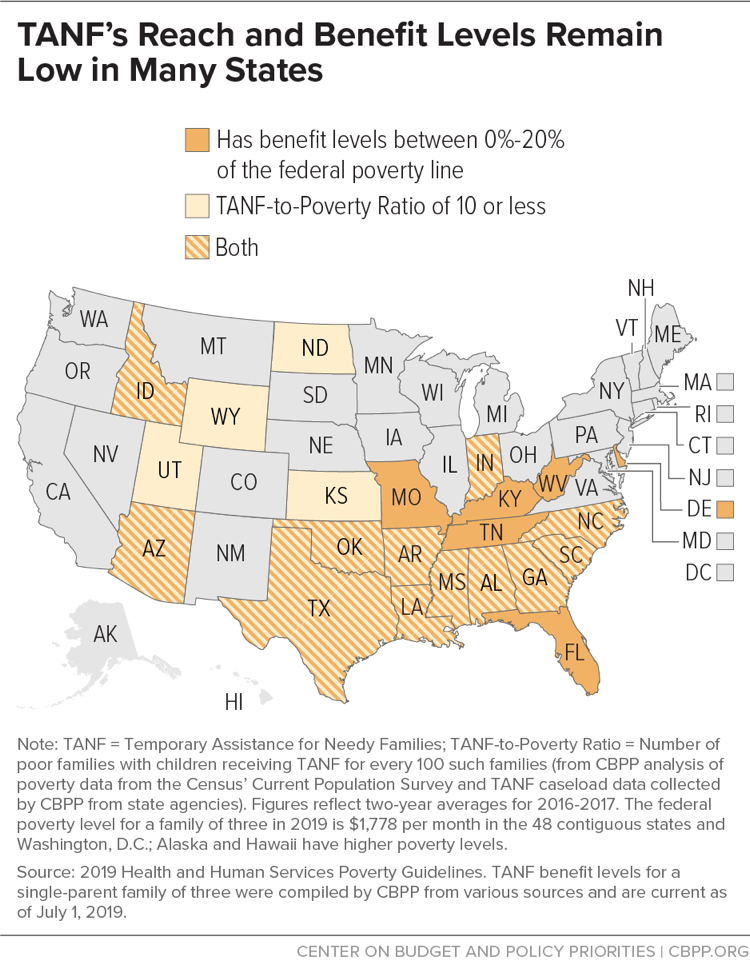más allá de los números
TANF at 23: Black Children Have a Better Chance to Thrive When States Act to Improve TANF
In replacing the Aid to Families with Dependent Children (AFDC) program with the Temporary Assistance for Needy Families (TANF) block grant 23 years ago, policymakers promised all families living in poverty a better economic future by providing temporary financial support, along with job preparation and work support. TANF has fallen far short in fulfilling this promise, particularly in states where Black families are likelier to live. It can, and must, do better. Our week-long blog series examines TANF’s role — and its performance — in providing modest but crucial anti-poverty support.
Last week, we explained that cash income matters to the lifelong success of children living in poverty. We can all agree that Black children should have the same opportunity to thrive as their white peers. However, choices that some states have made in their TANF programs can limit Black children’s access to the same opportunity. Earlier this week, we noted how, under TANF’s flexibility, states perform poorly when it comes to TANF benefit levels, the reach of TANF cash aid, and how they spend TANF funds. Today’s post looks at data showing that states where Black families are likelier to live are among the poorest-performing states in the nation on these three factors.
- Lowest TANF benefits: Fifty-three percent of the nation’s Black population lives in states where benefits are at or below $356 a month, which is 20 percent of the poverty line; only 39 percent of white people live in these same states. This is consistent with the trend since AFDC, TANF’s predecessor. (Under AFDC, states had flexibility to set their own benefit levels but very limited leeway to formally restrict eligibility.) Very low benefit levels were available in those same states at TANF’s outset.
- Less access to TANF cash assistance: About 39 percent of the nation’s Black population lives in states where 10 or fewer families receive TANF cash assistance for every 100 families in poverty (a measure known as the TANF-to-poverty ratio), compared to 28 percent of the nation’s white population. Many of these low-ratio states also have benefit levels below one-fifth of the poverty line. (See map.) These states made TANF less accessible to families that need it through, for instance, strict eligibility barriers, restrictive work requirements, and harsh time limits for assistance. Excluding Black parents from financial assistance when they may also be experiencing employment discrimination can leave many at risk of spiraling into debt and financial instability.
- Least spent on cash assistance: Unsurprisingly, states that have decided to reach few poor families and keep benefits low chose to spend little on basic assistance. Black families are likelier to live in the nine lowest-spending states than white families, at over 30 percent and 23 percent of these groups, respectively.
Nearly a quarter of the Black people in this country live in the seven states that perform poorly in all three of these areas: Arizona, Arkansas, Indiana, Louisiana, Mississippi, North Carolina, and Texas. Only 17 percent of white people in this country live in these seven states.
In states where most Black families live, state flexibility under TANF has significantly weakened financial support and access to the work programs that TANF can offer, exacerbating racial inequities that decrease economic mobility and opportunity. Economic security programs, like TANF financial assistance, can improve children’s long-term outcomes, a growing body of evidence shows. Black children and their peers can thrive when they have access to more resources for a stable foundation during childhood. Policymakers can and should increase TANF benefit levels and protect their value, remove barriers to cash assistance, and target TANF funds to families experiencing poverty. The states where Black families likely live must step up and end this disparity to truly bring an end to poverty in all communities.

